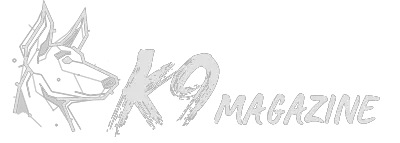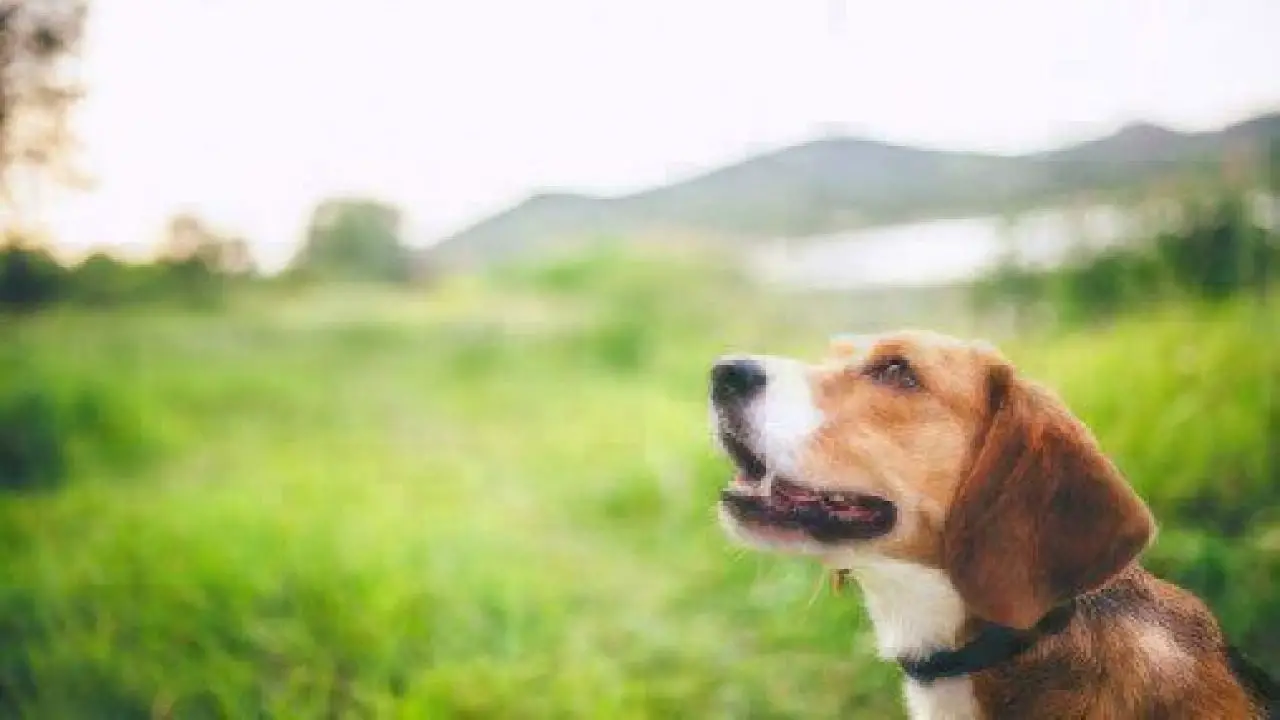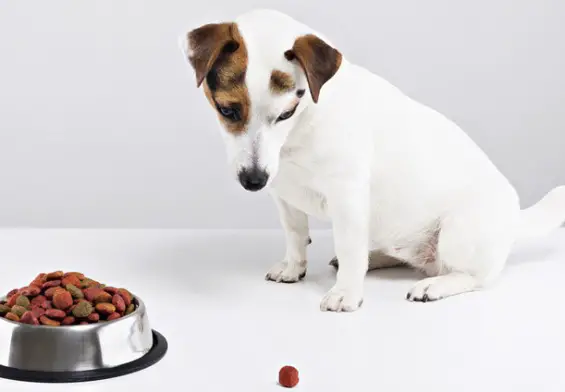My Dog Killed a Squirrel and Is Eating It – Should I Be Worried?
Like several other animals, a Dog’s predatory instinct means it is frequently in search of prey. While these predatory instincts are more pronounced in dogs that live in the wild, such instincts aren’t wholly suppressed in domesticated ones. This means; your Labrador, Bulldog, or German Shepherd aren’t exempted from hunting preys whenever they have the chance.
Whether they have a full stomach or not, the urge to hunt down prey is ingrained in dogs’ DNA, whether wild or domesticated breeds. One of the commonest preys your dog will likely chase down is a squirrel. Considering their size and frequency of squirrels’ appearance, they are usually seen as an easy mark by dogs. Whenever they see one, they give chase and try to capture them. This means it is likely that your dog may eat a squirrel. While this might sound unharmful at first, many things could go wrong if your dog eats’ a squirrel. But what exactly could go wrong?
What Could Happen If Your Dog Eats A Squirrel
While your dog can eat a healthy squirrel and go unscathed, they’ll likely pick up health problems if they eat an infected or dead squirrel. Yes, Dogs eat dead squirrels as well. They’re are attracted to the smell of dead prey and could pick up one with their mouth if they find any. Unfortunately, dead squirrels have likely been infected by bacteria and several other health threats that may affect your dog if they consume them. Live preys aren’t left out. In some areas of the United States, Squirrels are the primary reservoir of Lyme Disease. Lyme disease represents a serious health challenge for canines. It can result in loss of appetite, pains in their joints, lameness, and fever. Treating Lyme disease can also set you back financially. If your dog tests positive for Lyme disease, it could take a series of antibiotic medication spanning a period of thirty days to nurse it back to health.
Unfortunately, Lyme disease isn’t the only thing you need to worry about. In some regions, Squirrels also carry leptospirosis, a species of bacteria that poses a potent threat to the normal functioning of your dog’s internal organs. Your dog’s liver and kidneys are usually the most targeted organ during a leptospirosis invasion. Since your dog will likely devour a squirrel without leaving out any part, there’s a strong chance it may ingest the prey’s urine. Leptospirosis is usually contained in a squirrel’s urine. If your dog consumes a squirrel (whether dead or alive catch), there’s a strong possibility it may get the destructive bacteria.
Other concerns include rodenticides and contagious mites. Your dog may inadvertently consume contagious mites when they feed on a mice-infested squirrel. Also, squirrels may ingest rodenticide from food sources intended to poison them. While some of them may die from the poison, some who took a not-so-potent dose of such poisons may keep moving around. Whatever the case maybe, if your dog hunts down a squirrel whose blood is tainted by rodenticide or eats a squirrel that was killed by rode rodenticide, they’re inadvertently ingesting toxic substances that could be fatal to them.
It doesn’t end there. One other disease dogs can contract from eating squirrels is roundworm. A dog will pick up roundworms if it eats a squirrel that has been infected with the larvae of a roundworm. While roundworm may initially sound unharmful, they’re, in fact, quite the opposite. When your dog is infected with roundworm, the parasite settles in your dog’s intestine and gulps up nutrients. A huge chunk of nutrients your dog gets from food will end up being usurped by these treacherous worms. Your dog will end up being malnourished despite properly fed. Symptoms of roundworm infestation include lethargy, abnormal feces, abdominal swelling, vomiting, loss of appetite, and coughing (when the roundworm’s larvae have reached the dog’s lungs).
Another parasite of concern is coccidium. This is the parasite responsible for coccidiosis. It is usually transmitted to dogs when a dog consumes dead rodents or birds. Symptoms of the presence of the coccidium parasites include loss of appetite, vomiting, dehydration, and diarrhea (bloody diarrhea in severe cases).
When dogs contact wildlife, they can also contract zoonotic infectious diseases (meaning diseases that can be transmitted between animals and humans). Lyme disease, rabies, and plague all fall under this category. These diseases can be transmitted to humans if an infected animal (in this case, a dog) bites or scratches a human. It could also be transmitted if a human is exposed to an infected animal’s saliva or is bitten by a backlogged tick that comes from such an animal. In around 99 percent of cases, domesticated dogs are usually responsible for transmitting the rabies virus to humans. Unfortunately, diseases like rabies can be fatal once the symptoms start showing up.
Although it is very rare for a squirrel to dogs and then dog to human transmission of rabies to occur, the possibility of such occurrence represents a very potent threat to a dog owner’s life. In the wild, Squirrels are usually killed by rabies shortly after they contract the disease. This significantly reduces the possibility of your dog encountering rabies-infected squirrels.
However, since a dog would still likely pick up a dead squirrel with its mouth (or even eat it), there’s still a risk of transmission. Letting your dog eat squirrels doesn’t only pose a health threat to the dog but also you as a dog owner.
What Do You Do If You Suspect That Your Dog Ate A Squirrel?
If you find your dog covered with furs that resemble those of a squirrel, it is important to take action immediately. It could be that it just finished eating a squirrel or was just involved in a fight with one. In addition to furs, if you notice wounds or scratch marks on the dog, it is quite likely that a squirrel scratched it as they fought.
While the scratch marks from squirrels aren’t usually something your dog can not survive, there’s a chance that bacteria or infection of any kind may have been transmitted. The best course of action is to call your vet for advice and treatment if necessary. Do not make any assumptions. Take action immediately.
How Do You Prevent Your Dog from Eating Squirrels?
For dogs, hunting for food is a primordial instinct. Whether domesticated or in the wild, dogs have a strong urge to hunt for prey. This makes it a little tough to ensure your dog doesn’t eat squirrels. However, it is not an impossible task. One of the key ways to keep your dog from eating squirrels is training. Once you’ve demonstrated to your dog several times, using appropriate training techniques, your dog should be able to avoid eating squirrels it catches. It’s going to be a little tough to teach your dog to avoid hunting squirrels. That’s basically asking them to betray their primordial instinct. It is easier to train your dog to avoid eating squirrels they’ve hunted down or dead ones they’ve found. Nonetheless, if you are up for the task, you can train your dog to be nonaggressive against squirrels and other prey. Here’s how;
Training Your Dog to Avoid Hunting Squirrels
Fortunately, dogs can learn and unlearn a behavior if you use the right training techniques and put in just enough time to train them. You can get your dog to limit significantly or curb its aggressiveness towards squirrels in a few weeks. If your dog is older, it could be a bit tough to get it to drop its lifelong behavior. However, if your dog is a puppy, it would respond to the training much faster.
To kick start the training process, there are a few things you need to put in place;
- You’ll need to get your dog’s favorite treat. This is what you’ll use to incentivize their obedience and reward them when they act as instructed.
- You’ll also need a large outside space, preferably quiet and free from any form of distractions.
- Get a muzzle, a dog body harness, and a long leash.
- You’ll need a live squirrel or a stuffed one that looks life-like. (Life ones work better as dogs can easily spot a fake)
The aim of the training is to get your dog acquainted with the target animal (squirrel).
Secure the squirrel in a see-through case or tie it up in an open space. Once the squirrel is secured, put your dog on a leash (and a body harness if it’s a big dog) and take it out for a walk in the quiet open space. From a considerable distance from the squirrel, keep working towards the squirrel’s general direction and while holding your dog’s leash firmly. Make sure you go on the walk with a lot of your dog’s favorite treats.
Walk close to the squirrel, just close enough for your dog to identify it and not any further. Take out your dog’s favorite treat, and then head towards the squirrel slowly. With every new step, you take without the dog becoming aggressive towards the squirrel, award it with some treats. By doing so, you’re reinforcing it to behave nicely around squirrels. The idea is to familiarize your dog with the squirrel, never lose track of that.
React promptly when your dog shows any signs of aggressiveness by pulling the leash firmly away from the squirrel and walking away. By pulling the leash, you’re showing your dog that aggression will not be tolerated. You’re also showing the dog that it won’t go in the direction it wants if it doesn’t behave nicely. Keep walking away, but hang around in the general area. Once the dog has calmed down, head back towards the squirrel, and repeat the positive reinforcement every time it acts as you desire.
Keep practicing the routine for at least 15 minutes each day. Every day, keep edging closer to the squirrel as it shows fewer signs of aggression. Keep edging closer to just a few feet close to the squirrel. Also, keep the rewards coming during this time.
Continue with the routine and gradually withdraw the food reward until the dog doesn’t need a reward to behave nicely around squirrels. When you’re very confident you’ve reached your goals, lose the muzzle, body harness, and leash and let it get close to the squirrel. It may take you a few weeks, but with consistency, you’ll get your dog to avoid hunting squirrels.
Apart from training your dogs to avoid eating squirrels, another effective way to ensure they don’t eat squirrels is to significantly limit their possibility of seeing or meeting one. You can do this by fencing off your dog’s play area to ensure it cannot be accessed by wildlife. You can also frequently put them on a leash. If your dog roams most of the time freely, putting a bell on its neck will ensure squirrels hear the dog coming and run before the dog has an opportunity to capture it. Whichever method or combination of methods you choose to keep your dog safe from diseased squirrels, proper vaccination is a potent option that can keep your dog safe even after exposure.





